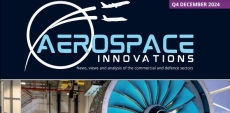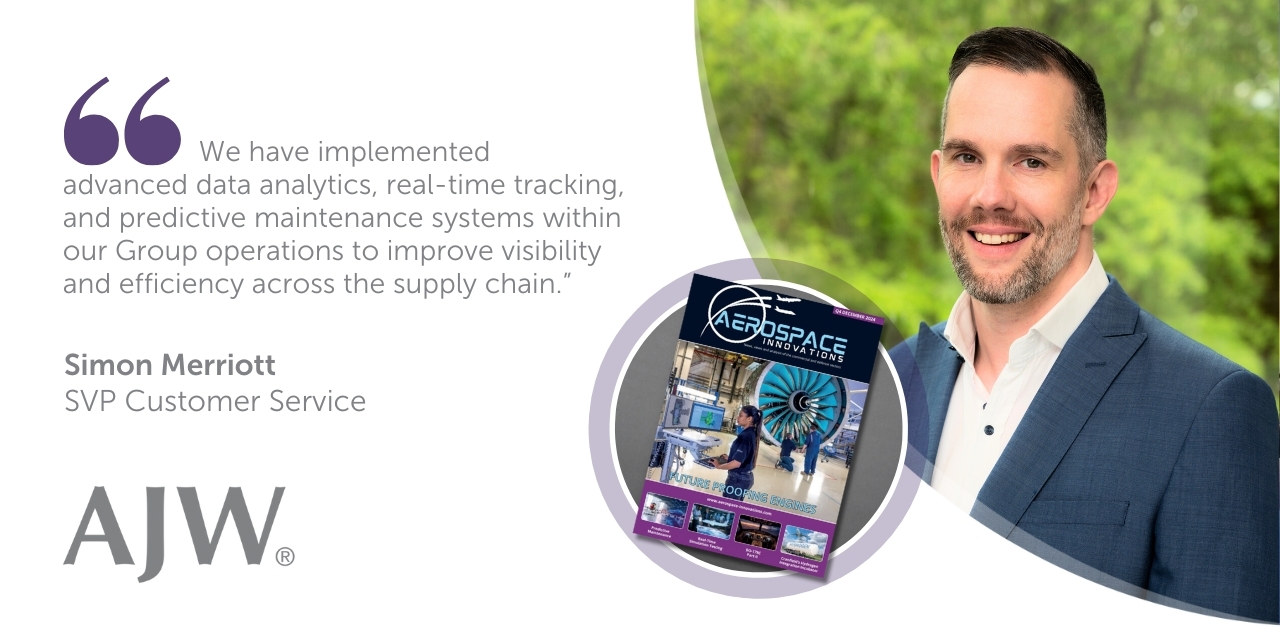

24/7 AOG Critical Response
Hotline![]() UK +44 1403 798888US +1 877 780 2008
UK +44 1403 798888US +1 877 780 2008
Our award winning global AOG service is manned 24 hours a day, 365 days a year.
Please call +44 1403 798888 or email aog@ajw-group.com.

19 Dec 2024

For almost 100 years, the automotive industry has streamlined manufacturing through the process of vertical integration – owning part, or all, of their major suppliers. In contrast, the aerospace industry’s disjointed supply chain can lead to delays in manufacturing, repair and product delivery. Is it time to apply the lessons of vertical integration to aerospace manufacturing and repair? Aerospace Innovations magazine investigates.
Reporting for Aerospace Innovations Magazine, James Careless speaks to industry experts about the opportunities and challenges of implementing vertical integration into the aerospace industry.
Talking to Simon Merriott, AJW Group’s SVP of Customer Service, Careless begins by asking about the current state of vertical integration in OEMs and MROs.
Merriott shares that as a result of their supply chain challenges during and after Covid-19, OEMs are more sympathetic to the idea of vertical integration. In fact, he has observed that “Vertical integration is becoming more prevalent in the aerospace OEM supply chain... with major OEMs like Boeing, Airbus, GE Aviation, and Rolls-Royce increasingly integrating upstream by acquiring suppliers or forming long-term partnerships to secure access to critical components and raw materials.”
Addressing the aerospace MRO supply chain, Merriott states that it is more fragmented than that of the OEMs, but vertical integration is on the rise there as well.
“OEMs are increasingly entering the MRO market, either by establishing their own service centres or acquiring independent MRO companies. This is a shift from the past, where MROs operated independently from OEMs,” he asserts.
Careless enquires about the gaps in the OEM and MRO supply chains. “OEMs rely on a vast network of specialised suppliers, often involving thousands of components sourced globally. Integrating all tiers of this supply chain is highly complex and cost prohibitive,” replies Merriott.
He continues, stating that “independent MROs may rely on multiple suppliers for spare parts, which can lead to bottlenecks and inefficiencies in the supply chain. So vertical integration in MRO is limited by the fact that MROs cannot control the production of parts, creating logistical challenges.”
Next, Careless asks about the impact of these supply chain gaps.
The AJW Group SVP of Customer Service notes that these gaps create distinct and different problems for OEMs, MROs, and their airline customers. “For OEMs, especially at the lower tiers of the supply chain, these gaps can create vulnerabilities in production schedules and delivery times.”
“Independent MROs face gap-related challenges due to their reliance on third-party suppliers for critical parts. Delays in parts procurement can lead to longer aircraft downtimes, higher operational costs, and a reduced ability to meet customer expectations,” he adds.
Finally, airlines may experience extended aircraft downtime, which impacts their ability to generate revenue and maintain reliable schedules, says Merriott.

If vertical integration is the key to resolving the aerospace industry’s supply chain issues — both on the OEM and MRO sides of the coin – then how do we fill the supply chain gaps?
Merriott asserts that one way forward is to create partnerships with third party suppliers that mimic the seamless smoothness of true vertical integration. “OEMs and MROs can establish stronger, long-term partnerships with key suppliers, as AJW Group has done over its 92-year legacy.” he explains.
A second solution is to use advanced technology solutions. “We have implemented advanced data analytics, real-time tracking, and predictive maintenance systems within our Group operations to improve visibility and efficiency across the supply chain,” says Merriott. “Our digital transformation efforts allow for more streamlined processes, better inventory management, and quicker responses to supply chain disruptions we may encounter.”
Finally, Careless asks what lessons we can learn from the automotive sector.
Merriott replies that standardising certain aircraft components, where possible, could help reduce complexity and improve supply chain efficiency. “This would enable easier sourcing and manufacturing of parts across different platforms.”
“In addition, automotive companies often use just-in-time (JIT) production to minimise inventory costs and reduce lead times. While more challenging in the aviation industry due to safety and regulatory requirements, elements of JIT could improve efficiency in the aviation MRO supply chain,” he adds.
Merriott concludes that the aerospace industry is undergoing a transformation, with vertical integration becoming more prevalent. The key to success lies in collaboration—between OEMs, MROs, and suppliers—along with investments in digital technology to improve transparency and efficiency.